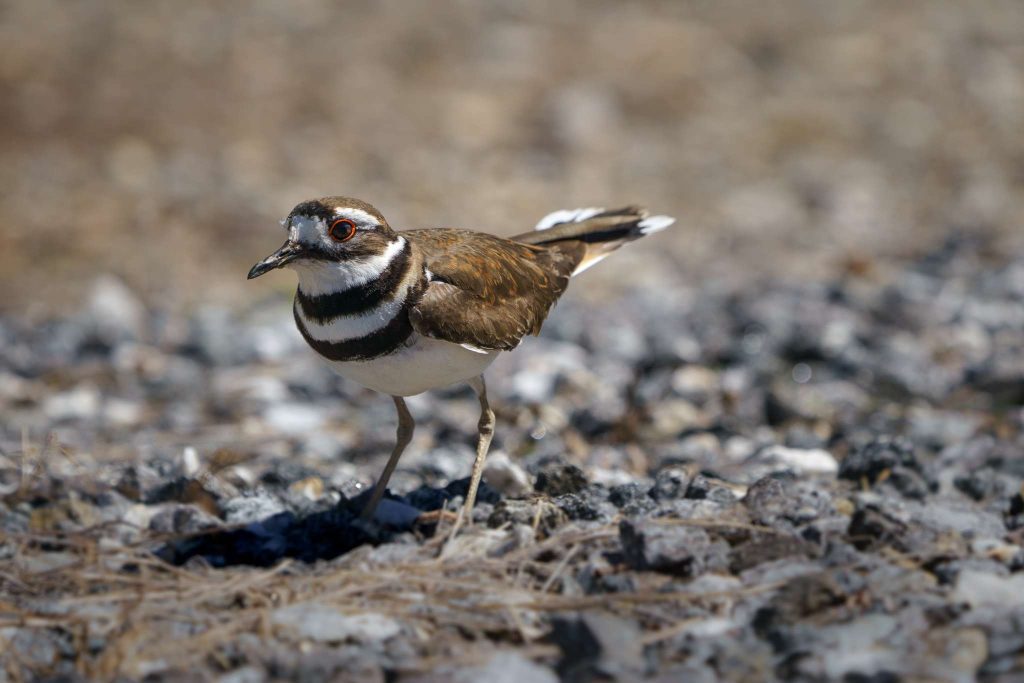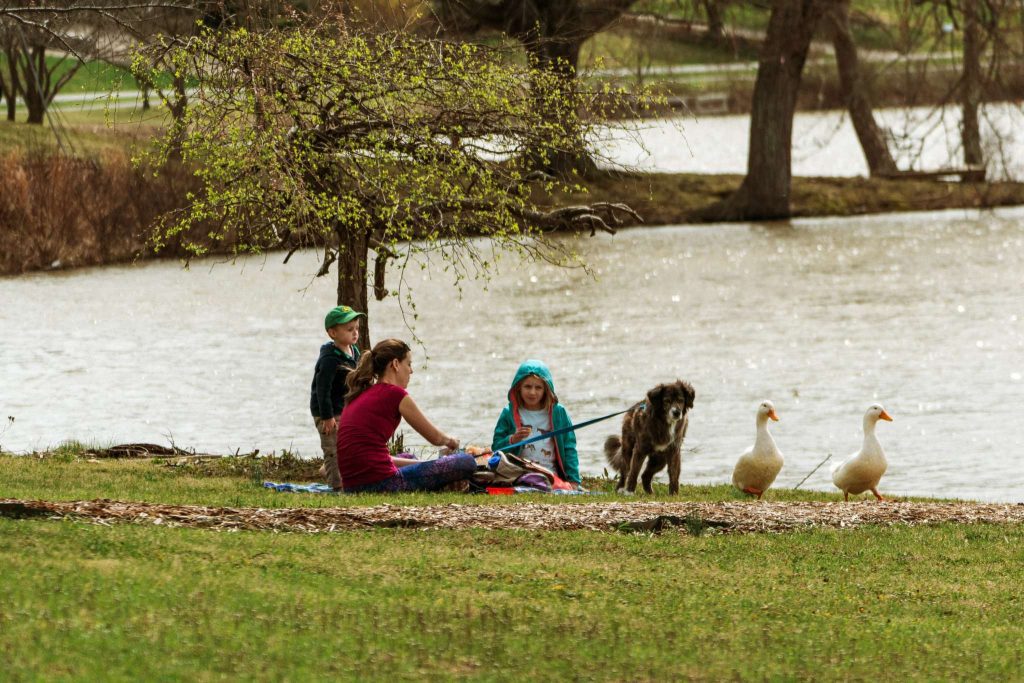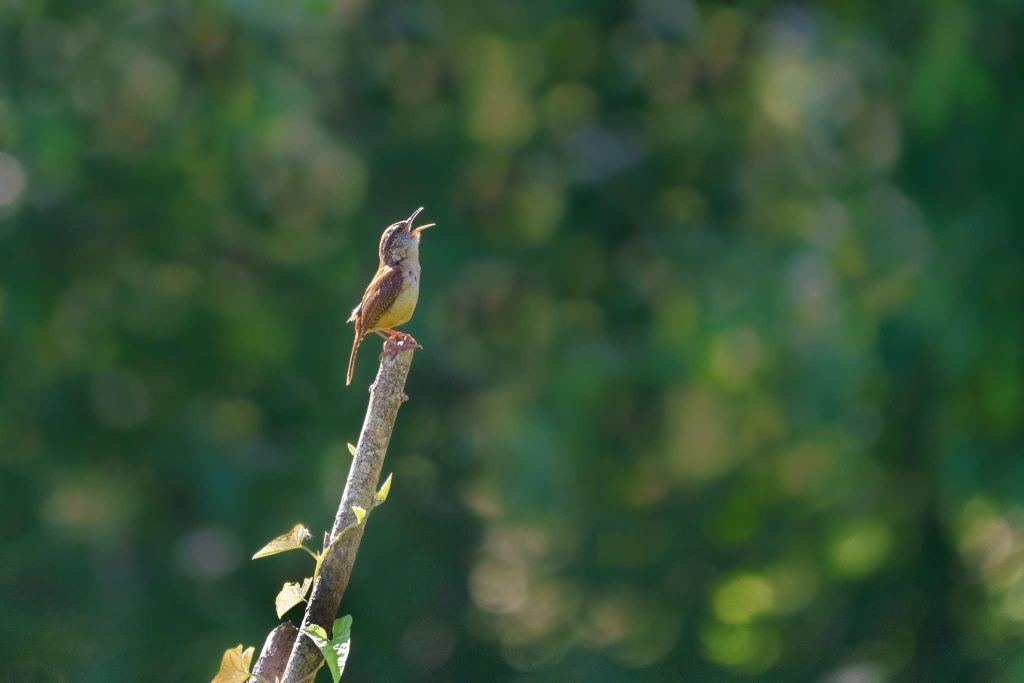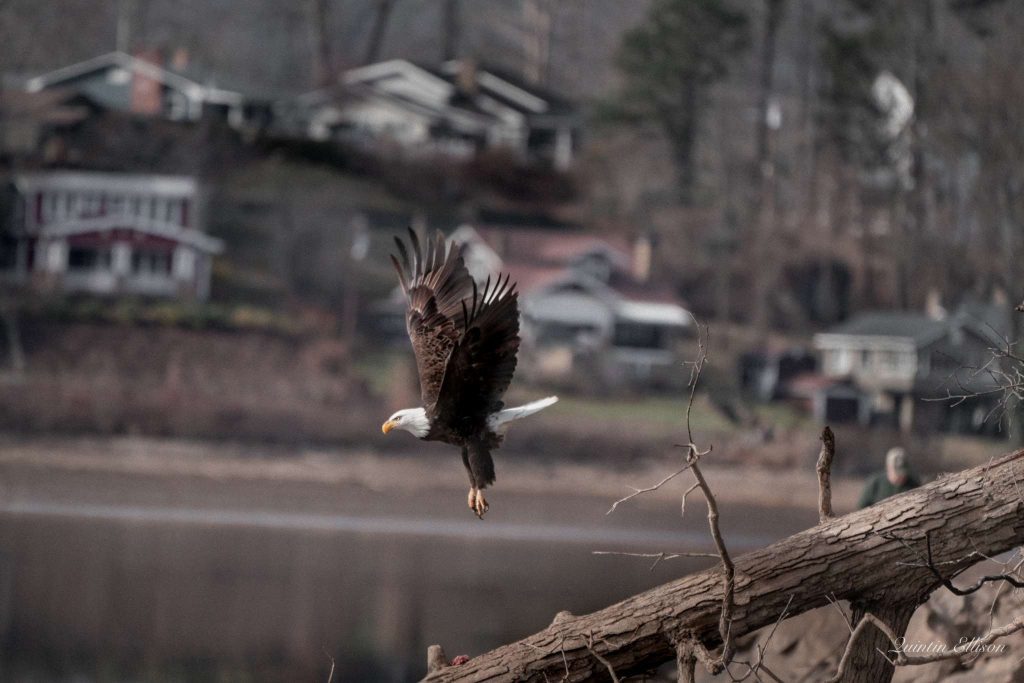The Smoky Mountains of western North Carolina are a prime destination for birdwatchers, or “birders,” thanks to a wide range of elevations and a diversity of habitats that welcome both permanent residents and migrating species.
The arrival of spring marks the first of the year’s big seasons for birding, when migrating songbirds arrive at lower elevation areas. These travelers move into the area throughout the spring and into the summer, when eagle-eyed birdwatchers can find dozens of species singing and nesting in the trees.
Early fall marks a second big migration season and is notable for the opportunity to see Broad-Winged Hawks and other awe-inspiring species.
Prime Locations to Bird Watch in the Smokies.
Pack your binoculars for these favorite birding hotspots in the N.C. Smoky Mountains:

Stecoah Gap
Just a few miles from the crystalline lakes of the Indian Lakes Scenic Byway, scenic Stecoah Gap is famous for its variety of stunning wildflowers, as well as a diversity of warblers during the spring breeding season in April and May.
Hop on an easy-to-hike forest road and look out for Blackburnian Warblers, Black-throated Green Warblers, Dark-eyed Juncos, Rose-breasted Grosbeaks, Scarlet Tanagers and Wood Thrushes. Or choose the Appalachian Trail for a more strenuous hike and a possible sighting of the vivid Cerulean Warbler.
Kituwah Farm & Cherokee
The site of one of the original “mother towns” of the Cherokee Nation, Kituwah Farm offers 300 acres of open field to explore—perfect for spying raptors like the American Kestrel and sparrows such as Savannah and White-crowned sparrows, even in late winter and early spring. A few miles away, the Garden Trail at the Oconaluftee Indian Village offers an introduction to native plants and those cultivated by the Cherokee people, as well as sightings of Pileated Woodpeckers, Ruby-throated Hummingbirds and Hooded Warblers.

Lake Junaluska
Situated in an idyllic valley a few miles from downtown Waynesville, Lake Junaluska is home to dozens of bird species, from waterfowl like swans (see baby cygnets April-June), herons and ducks, to a number of vireos and woodpeckers.
Bird enthusiasts have been very excited to see a nesting pair of Bald Eagles at Lake Junaluska in recent years. Pick up a birding checklist at the welcome center, or check the calendar for a guided bird tour in summer.
Little Tennessee River Greenway
In the town of Franklin, the Little Tennessee River Greenway offers a pleasant paved walk along the river, plus many family-friendly recreation options. Birders will find plenty of species along the main trail, and don’t miss the small wetland area adjacent to Big Bear Park where you’re likely to see White-breasted and Brown-Headed Nuthatches, Red-winged Blackbirds and a variety of ducks and woodpeckers.

Blue Ridge Parkway
With its wide diversity of elevations and habitats, the Blue Ridge Parkway is a birder’s paradise. Devil’s Courthouse is a favorite nesting area of the Peregrine Falcon, with the parking area at milepost 422.4 offering the best views. Visit this area at sunset for a stunning view, then stick around during the spring months to hear the songs of Veery and Winter Wrens and to listen for the call of the Northern Saw-whet Owl.
Pack a picnic for Waterrock Knob at milepost 451.2, which boasts a panoramic view and a convenient loop trail perfect for spying Ruffed Grouse, Brown Creeper, Cedar Waxwing and many species of warbler.

